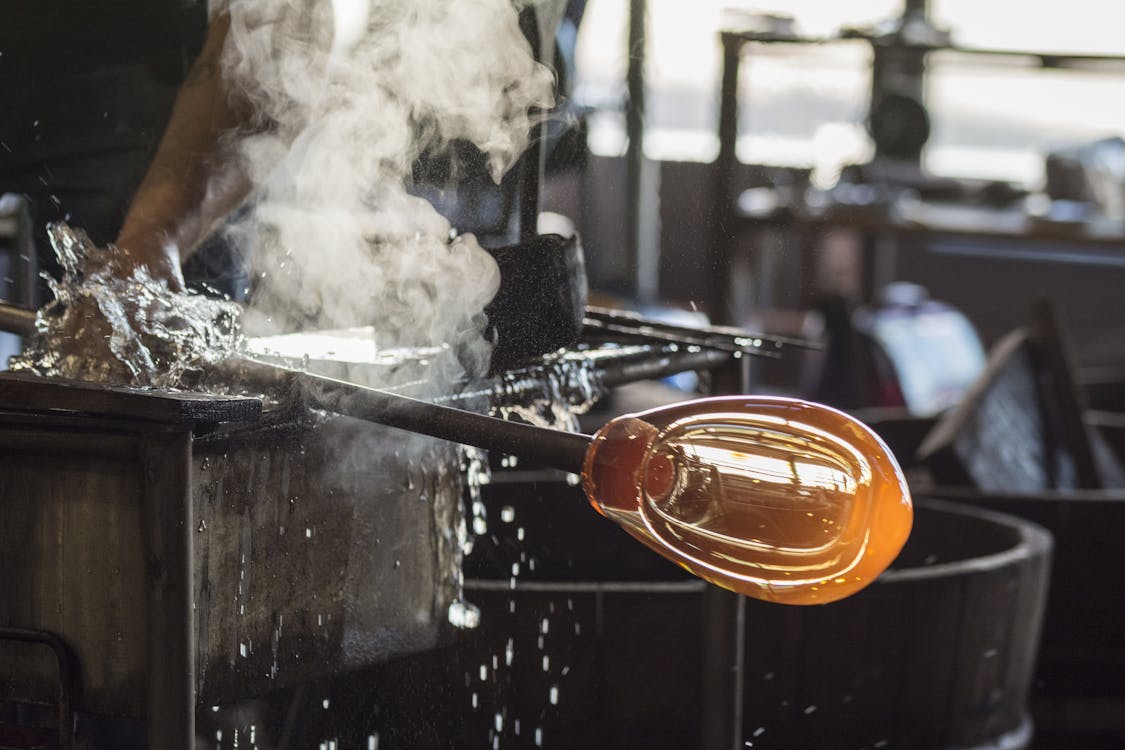A thing of beauty
How can a tiny piece of glass be transformed into an object of desire? The art of Glass Blowing is as ancient and as fascinating as it looks. The practice involves shaping the glass using heat and as the name suggests- blowing the glass. What it results in are awe-inspiring glass products that are equal parts whimsical & magical.

The Awe Inspiring Technique
The techniques used in glassblowing have remained nearly the same since it was first discovered. It involves molten glass that is gathered at the end of a hollow pipe. Air is then blown through that pipe and the pliable glass blooms into a bubble form. From there, it’s shaped by swinging, rolling, or blowing. Afterward, additional elements that would make the glass functional are attached using welding.

A Chapter from History
Humans working with glass can be traced back to the prehistoric times of 4000 BCE. Men had not discovered glass blowing at that time, but they did take advantage of the natural glass called obsidian that was the result of volcanic eruptions. At this time, humans also figured out the recipe for glass: sand, plant ash, and lime.
We have the Syrian people to thank for the invention of the blowpipe. Around 300 BCE, they created the tool for which modern glassblowing is built upon.
During the Middle Ages, however, Italy—specifically Venice—became the mecca for glassblowing as the process was revealed through trade between the two places. The Italian government then forced all of the glassblowers to Murano island around 1300 CE. There, they perfected their craft and developed clear glass and new colors.
It was a huge risk for glass blowers to leave Murano—the act was punishable by death. There was a time when glass blowers were held hostage for fear that their knowledge and secrets might leak. But many succeeded in escaping and took their techniques to other parts of Europe and Asia.
The Dying Heritage
Unless there is this passing-on of knowledge through the generations, manual glass-blowing production will eventually disappear. On this journey of highs and lows where labour shortage is just one of the challenges faced, the commitment to the quality and excellence of the products is crucial to its survival.

The Magnificent Products
Blown glass is an extraordinary piece of art created exquisitely by the artist, thus each being unique; a part of the artist's identity. A variety of eye-catching glass products, from the usual vases and sculptures to chandeliers and exquisite gifts can be made out of blown glass.
The product range at Glass Forest includes anything one can visualise to be fashioned by the glass - home décor articles, wall structures, chandeliers, accessories, gift items, and every individual piece is designed elaborately and exclusively, transcending the traditional boundaries of glassware, creating an aesthetic, emotive and inspirational character with each piece.

Care for the precious ones
Owning a glass blown object is an act of pride and joy. Thus, it needs to be properly cleaned every once in a while, as it can only shine in its prime glory with the right maintenance.
Dry Cleaning:
- Use care when handling glass works – and two hands!
- Make sure your hands are clean but don’t wear gloves, which may be slippery
- Pick up all glass art by the base
- Loosen the dust with a soft brush or use a lint-free microfiber cloth
Water & Detergents
- Use a damp lint-free cloth to wipe glass art after dry dusting
- Thicker items can be washed gently in lukewarm water with neutral soap
- Do not use ammonia, cream cleaners or any harsh chemicals to clean shiny glass art. Aggressive detergents can damage the surface and leave an irreversible patchy, cloudy or milky effect
- Cream cleaners can be used on etched or sandblasted glass to remove some scratches or marks
Drying
After washing dry your artwork thoroughly with a soft cloth because minerals in water leave a residue which can damage and leave spots on the glass art
Things not to do
- Do not wash two pieces together as they may get scratched or damaged in the process
- Do not put extremely hot or cold liquid into your glass as this may cause it to crack
- Do not put your glass art in a dishwasher
- Do not use aerosol cleaners on glass art
A joy forever
It’s time we understand the art, science and hard labour behind our beautiful glass objects and take care of them with much love.

